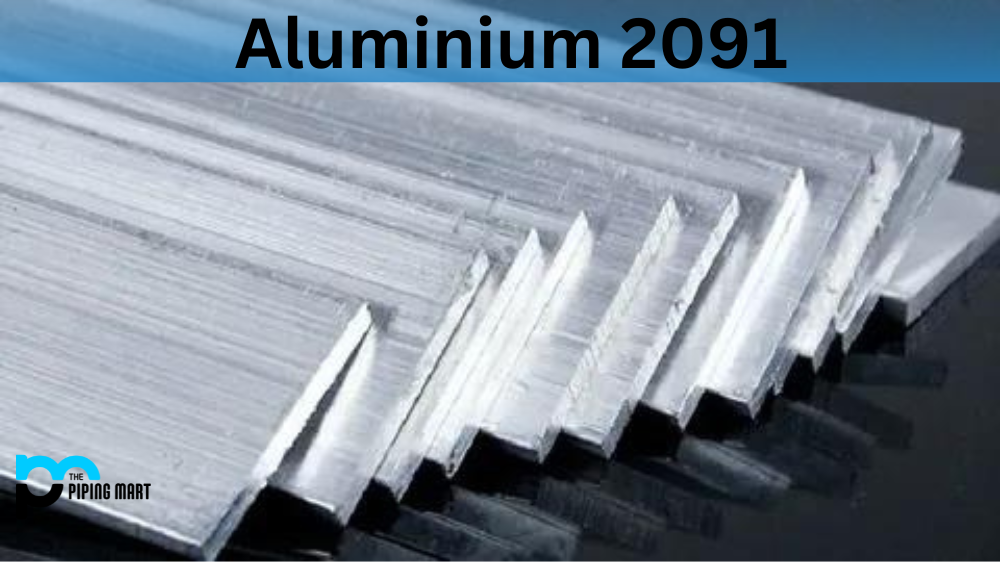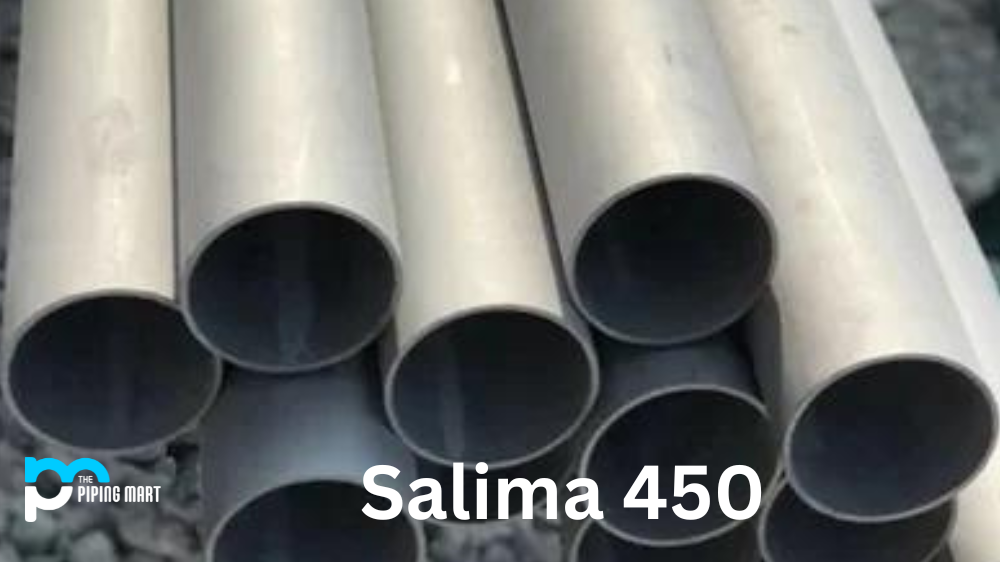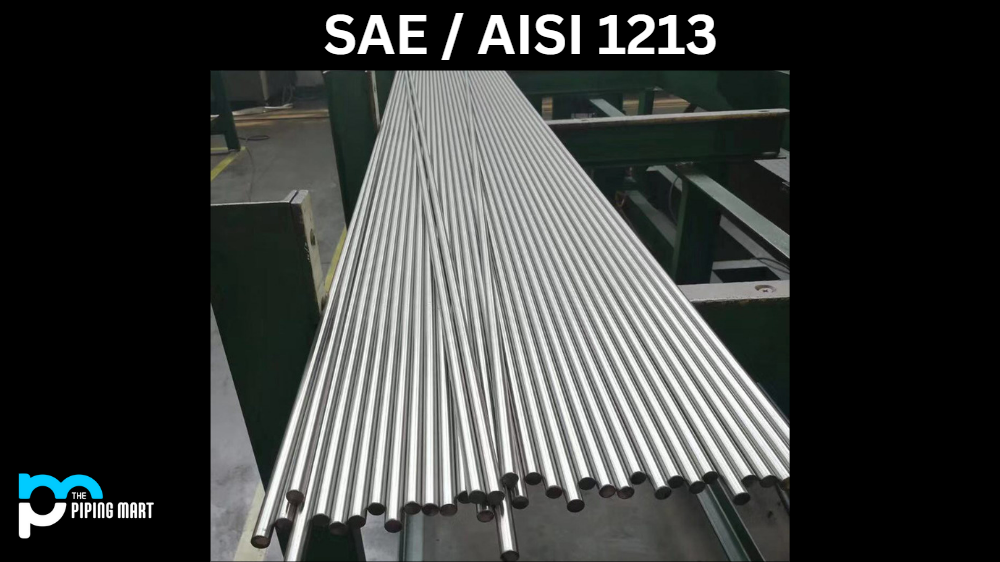Aluminium 2091 is an alloy known for its strength, lightness, and corrosion resistance. It is often used in the manufacturing of aircraft and automotive components and in marine and industrial applications. Due to its exceptional properties, UNS A92091, also known as 2091 Aluminium Alloy, is a highly sought-after material. This alloy is renowned for its high strength, which is about twice that of standard aluminium alloys, and excellent corrosion resistance. These properties make 2091 Aluminium Alloy an ideal choice for various applications, from aerospace to marine structures. The composition of this alloy includes copper, magnesium, and silicon, which contribute to its impressive strength and durability. Its unique combination of properties and composition sets it apart from other aluminium alloys, making it a top choice for demanding applications. In this blog post, we will discuss the composition, chemical properties, mechanical properties, physical properties, uses, corrosion resistance, heat resistance, heat treatment and machining of Aluminium 2091.
What Forms of Aluminium 2091 is Available at Piping Mart?
- Aluminium 2091 Nut
- Aluminium 2091 Bar
- Aluminium 2091 Bolt
- Aluminium 2091 Pipe
- Aluminium 2091 Screw
- Aluminium 2091 Tubing
- Aluminium 2091 Valves
- Aluminium 2091 Washers
- Aluminium 2091 Flanges
- Aluminium 2091 Fasteners
- Aluminium 2091 Electrodes
- Aluminium 2091 Stud Bolts
- Aluminium 2091 Sheet Plates
- Aluminium 2091 Pipe Fittings
- Aluminium 2091 Forged Fitting
- Aluminium 2091 Instrumentation Fittings
Aluminium 2091 Composition
Aluminium 2091 is composed of 95% aluminium and 5% magnesium. This combination creates a strong yet lightweight material ideal for many applications.
| Component Elements Properties | Original Value | Comments |
|---|---|---|
| Aluminum, Al | 91.9 – 95.4 % | As remainder |
| Chromium, Cr | <= 0.10 % | |
| Copper, Cu | 1.8 – 2.5 % | |
| Iron, Fe | <= 0.30 % | |
| Lithium, Li | 1.7 – 2.3 % | |
| Magnesium, Mg | 1.1 – 1.9 % | |
| Manganese, Mn | <= 0.10 % | |
| Other, each | <= 0.05 % | |
| Other, total | <= 0.15 % | |
| Silicon, Si | <= 0.20 % | |
| Titanium, Ti | <= 0.10 % | |
| Zinc, Zn | <= 0.25 % | |
| Zirconium, Zr | 0.04 – 0.16 % |
Aluminum 2091 Chemical Properties
The chemical properties of Aluminium 2091 include high thermal and low electrical conductivity. It also has excellent corrosion resistance due to its protective oxide coating formed by contact with air and water.
Aluminium 2091 Mechanical Properties
Aluminium 2091’s mechanical properties include high tensile strength, ductility, fatigue strength and good formability. These qualities make it a great choice for many applications where strength is needed without compromising weight or flexibility.
| Mechanical Properties | Original Value | Comments |
|---|---|---|
| Hardness, Brinell | 115 | 500 kg load with 10 mm ball. Calculated value. |
| Hardness, Knoop | 146 | Converted from Brinell Hardness Value |
| Hardness, Rockwell A | 45.6 | Converted from Brinell Hardness Value |
| Hardness, Rockwell B | 71 | Converted from Brinell Hardness Value |
| Hardness, Vickers | 130 | Converted from Brinell Hardness Value |
| Tensile Strength, Ultimate | 430 MPa | |
| Tensile Strength, Yield | 330 MPa | |
| Elongation at Break | 18 % | |
| Modulus of Elasticity | 75.0 GPa | |
| Fatigue Strength | 80.0 MPa @# of Cycles 1.00e+8 |
Notched with Kt = 1.035 |
| Shear Strength | 260 MPa |
Aluminum 2091 Physical Properties
The physical properties of Aluminium 2091 include a density of 2.7 g/cm3, a melting point of 627°C (1161°F) and an electrical resistivity of 0.0270 ohm-cm at 25°C (77°F). It also has an attractive silver-grey colour when polished or anodized.
| Physical Properties | Original Value | Comments |
|---|---|---|
| Density | 2.58 g/cc | AA; Typical |
Aluminium 2091 Uses
The most common uses for Aluminium 2091 are in aerospace components such as landing gear parts; automobile parts such as bumpers; marine components such as propellers; furniture frames; architectural panels; machine parts; industrial equipment; recreational vehicles; appliances; cookware; and other consumer goods where lightweight strength is desired without sacrificing quality or appearance.
Aluminium 2091 Uses in Industries
Aerospace Industry
Aluminium 2091 is widely used in the aerospace industry due to its high strength-to-weight ratio. It is commonly used to construct aircraft frames, wings, and engine components. Its lightweight nature allows for more fuel-efficient flights and reduces overall airline costs.
Automotive Industry
The automotive industry also heavily relies on Aluminium 2091 for its lightweight properties. It is commonly used to produce car bodies, wheels, and engine parts. This aluminium alloy helps improve fuel efficiency and reduce emissions, making it a popular choice for car manufacturers.
Construction Industry
Aluminium 2091 is also used in the construction industry for various applications such as building facades, roofing, and window frames. Its durability and resistance to corrosion make it a valuable material for long-lasting structures. Its lightweight nature makes it easier to transport and install on construction sites.
Marine Industry
Due to its high resistance to corrosion from saltwater, Aluminium 2091 is widely used in the marine industry for boat hulls, masts, and other structural components. Its lightweight nature allows boats to travel faster with less fuel consumption, making it a popular choice among manufacturers.
Aluminium 2091 Corrosion Resistance
The protective oxide coating formed by contact with air and water provides excellent corrosion protection against saltwater environments like marine vessels or coastal areas near large bodies of water. Additionally, its low electrical conductivity makes it resistant to electrochemical corrosion caused by stray currents from batteries or other sources in industrial settings like refineries or chemical plants.
Aluminium 2091 Heat Resistance
Its high thermal conductivity gives Aluminium 2091 the ability to dissipate heat quickly, making it suitable for applications that require heat dissipation, such as engine blocks or exhaust systems on cars or motorcycles. Heat Treatment: Due to its relatively low melting point compared to other metals, it can be heated up to 600-700°C (1112-1292°F) during heat treatment processes like hardening or tempering without becoming too brittle or soft depending on the desired outcome for the application being manufactured.
Aluminium 2091 Machining
Aluminium 2091 can be machined using conventional tools such as lathes, mills, drills, grinders etc.; however, due to its hardness, it requires special cutting tools designed specifically for harder materials like carbide-tipped tools.
Aluminium 2091 Welding
Aluminium 2091 can be joined using conventional methods like brazing. Still, due to its higher melting temperature than pure aluminium alloys, welding should only be done using TIG welding techniques using pre-heated filler rods.
Conclusion
Aluminium 2091 is a strong yet lightweight alloy suitable for many applications requiring strength without compromising weight or flexibility. Its high thermal conductivity makes it ideal for heat dissipation applications, while its excellent corrosion resistance makes it perfect for use in saltwater environments. Additionally, its low electrical conductivity makes it resistant to electrochemical corrosion caused by stray currents from batteries or sources in industrial settings like refineries or chemical plants. Overall aluminium 2091 is a great choice for many application sand industries where strength is paired with lightweight and high-quality finishes are required.

A passionate metal industry expert and blogger. With over 5 years of experience in the field, Palak brings a wealth of knowledge and insight to her writing. Whether discussing the latest trends in the metal industry or sharing tips, she is dedicated to helping others succeed in the metal industry.




